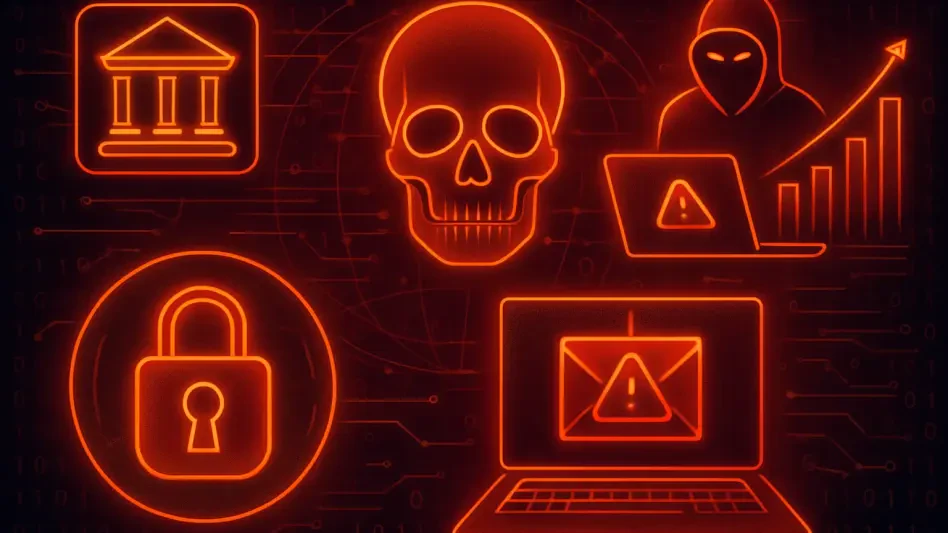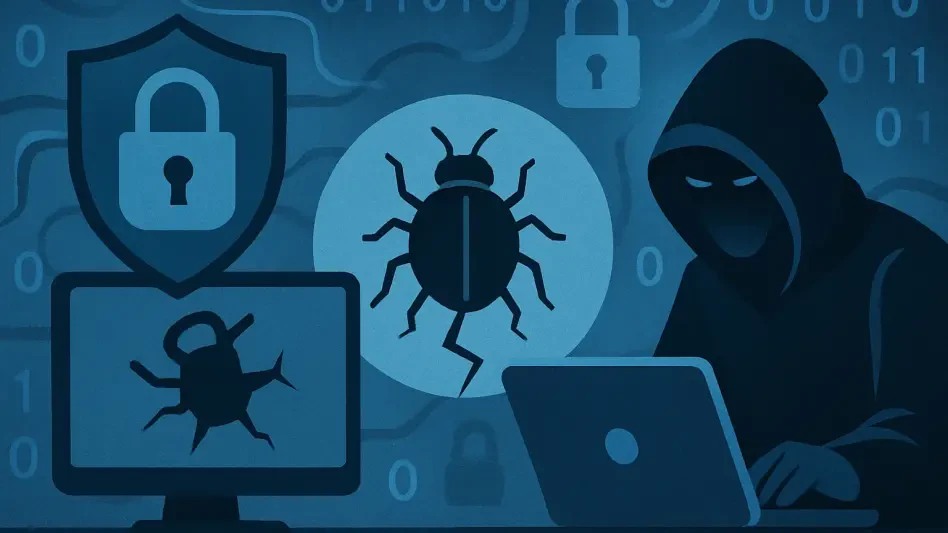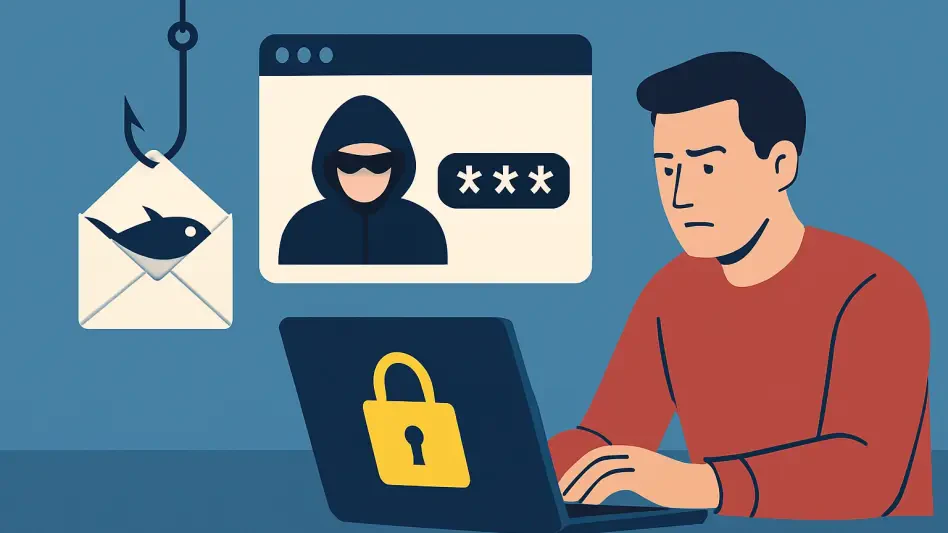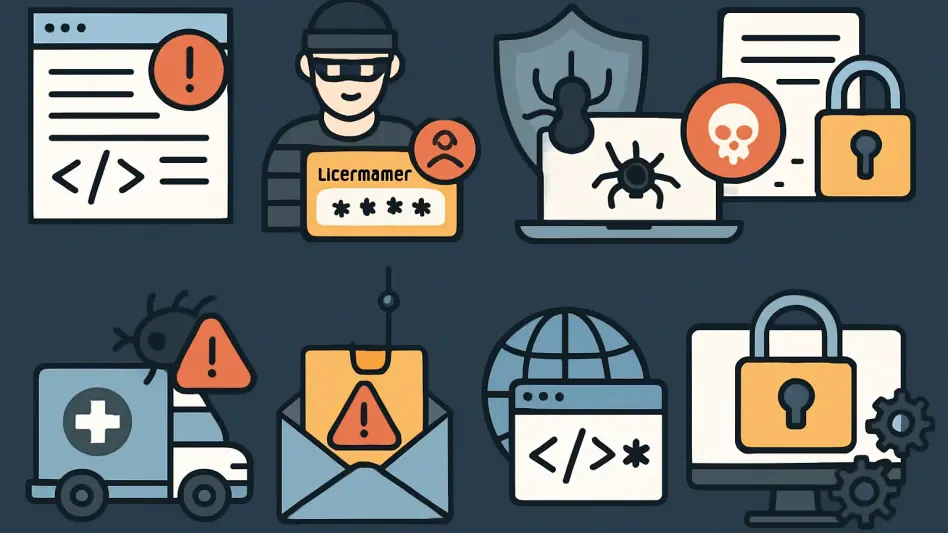In a digital era where cyber threats evolve at a breakneck pace, the CERT-W Report 2025, meticulously compiled by Wavestone’s Incident Response team, emerges as a critical resource for understanding the year’s most pressing cybersecurity challenges. Spanning insights from over twenty major cyber crises across various industries and organizational sizes, this report paints a vivid picture of a landscape under siege by increasingly sophisticated attackers. Far from a mere recounting of incidents, it serves as a strategic guide, dissecting the motivations behind cyberattacks, pinpointing common entry vectors, and highlighting trends that are reshaping how organizations must defend themselves. This analysis not only reflects the stark realities of the current threat environment but also offers actionable insights for bolstering resilience against an array of digital dangers. As cyber adversaries grow bolder and faster, the findings underscore an urgent need for adaptive strategies to safeguard sensitive data and systems.
Unpacking Cybercriminal Motivations and Tactics
Delving into the driving forces behind cyberattacks, the report reveals that financial gain continues to dominate as the primary motivator, fueling 65% of documented incidents. Ransomware stands out as the most pervasive tactic within this category, accounting for half of these financially driven attacks, often paired with other schemes such as business email compromise fraud and the illicit sale of stolen data on dark web marketplaces. This persistent focus on monetary profit highlights the lucrative nature of cybercrime, where attackers exploit vulnerabilities for immediate financial returns. Beyond direct theft, the psychological pressure exerted through ransomware—locking critical systems and demanding payment—amplifies the impact on victims, pushing many to comply under duress. The data suggests that as long as these methods yield high rewards, they will remain a cornerstone of cybercriminal activity, challenging organizations to fortify their defenses against such targeted extortion efforts.
A notable shift in the threat landscape emerges with the rise of espionage-driven attacks, which now constitute 17% of incidents, marking a significant 7% increase from the previous year. These attacks often aim to harvest business-critical data for strategic or geopolitical advantage, employing sophisticated techniques like SQL injections and intellectual property theft through compromised third-party partners. Unlike financially motivated strikes, espionage campaigns prioritize long-term gains, seeking to undermine competitive edges or influence broader power dynamics. The report emphasizes that this growing trend reflects a diversification of attacker intent, where sensitive information becomes a currency of power rather than profit. For organizations, this duality of purpose—profit versus intelligence gathering—necessitates a broader defensive mindset, one that accounts for both immediate threats and the slower, stealthier incursions aimed at eroding strategic foundations over time.
Entry Vectors: Where Attackers Strike First
Phishing has staged a dramatic resurgence as the leading entry point for cybercriminals, responsible for 38% of incidents this year, a sharp rise from 20% in the prior period. Attackers have refined their approaches, blending traditional email-based phishing with innovative variations like vishing, or voice phishing over phone calls, which complicates efforts to authenticate identities. This adaptability underscores how attackers exploit human vulnerabilities, often bypassing technical safeguards through social engineering. The report points to the creativity of these campaigns, where seemingly innocuous communications can lead to catastrophic breaches if not identified swiftly. As phishing tactics evolve, organizations face heightened pressure to educate employees and deploy advanced email security measures to intercept deceptive messages before they reach inboxes, mitigating the risk of initial compromise.
Beyond phishing, other critical entry vectors include exposed remote access services such as Remote Desktop Protocol (RDP) and Virtual Private Network (VPN) systems, implicated in several high-profile breaches. Additionally, technical vulnerabilities, exploited in roughly one out of every five cases, remain a persistent threat, often through known issues cataloged as CVEs (Common Vulnerabilities and Exposures). These weak points, whether in software or misconfigured systems, provide attackers with accessible pathways to infiltrate networks. The prevalence of such entry methods highlights a gap in basic cybersecurity hygiene, where unpatched systems or poorly secured remote tools become low-hanging fruit for opportunistic adversaries. Addressing these risks demands a commitment to regular updates, robust access controls, and continuous monitoring to detect and neutralize threats at the earliest stage, preventing deeper penetration into critical infrastructure.
The Race Against Time in Cyber Defense
The speed of modern cyberattacks is nothing short of staggering, with the fastest incident recorded in the report unfolding from initial access to data exfiltration in less than a day and a half. This compressed timeline leaves defenders with a razor-thin margin to detect and respond, often before significant damage is done. Such rapid execution reflects the opportunistic and highly organized nature of today’s threat actors, who capitalize on any delay in response to maximize their impact. The urgency of this reality places immense strain on traditional security frameworks, which may struggle to keep pace with adversaries operating at breakneck speed. As a result, the need for real-time threat intelligence and accelerated incident response protocols becomes paramount to shrinking the window of vulnerability.
Compounding this challenge is the deliberate targeting of backups in ransomware attacks, with 90% of such cases involving the deletion or encryption of recovery data to thwart restoration efforts. This calculated strategy aims to corner victims, increasing the likelihood of ransom payment by eliminating alternatives to compliance. The report underscores how this tactic amplifies the destructive potential of ransomware, turning a recoverable incident into a full-blown crisis. To counter this, organizations must prioritize secure, offline backup solutions and integrate automated detection tools to identify suspicious activity before backups are compromised. Leveraging technologies like artificial intelligence (AI) can further enhance response times, enabling security teams to stay a step ahead of attackers who operate with such ruthless efficiency in their quest for leverage.
Navigating an Expanding Attack Surface
The digital attack surface has ballooned, with third-party entities such as partners and subsidiaries emerging as critical weak links, serving as the entry point for 56% of attacks on large enterprises. This trend reflects the interconnected nature of modern business ecosystems, where reliance on external relationships—often through SaaS platforms and open-source software—introduces new vulnerabilities. Attackers exploit these connections to gain footholds, bypassing internal defenses by targeting less-secure peripherals. Business data remains the ultimate target, sought in 71% of incidents for purposes ranging from financial extortion to espionage. The report highlights that securing these external touchpoints is no longer optional but a core component of a comprehensive defense strategy, requiring vigilance far beyond traditional network boundaries.
This expanding threat landscape is further complicated by the integration of emerging technologies like AI and cloud-based solutions, which, while transformative, also create fresh opportunities for exploitation. The report notes that attackers often leverage these advancements to refine their methods, while organizations struggle to adapt security measures to cover sprawling digital footprints. To address this, extending monitoring and governance to encompass SaaS environments and supply chain partners is essential. Robust policies for third-party risk management, coupled with regular audits of external access points, can help mitigate the dangers posed by interconnected systems. As the attack surface continues to grow, a proactive stance—anticipating risks rather than reacting to breaches—becomes the linchpin of safeguarding critical assets against a backdrop of relentless cyber aggression.
Technology as Both Weapon and Shield
In the evolving cyber arena, technology serves as both a tool for attackers and a lifeline for defenders. Threat actors increasingly harness AI to enhance the precision and speed of their campaigns, automating processes like phishing email generation and vulnerability scanning to devastating effect. With the average time from intrusion to impact clocking in at just 1.5 days, the sophistication enabled by such tools allows attackers to outmaneuver manual defenses with alarming consistency. This technological edge underscores a grim reality: adversaries are not only numerous but also equipped with cutting-edge capabilities that amplify the scale and impact of their operations, challenging organizations to rethink how they protect their digital environments.
On the flip side, the report strongly advocates for organizations to adopt similar technologies to bolster their defenses, emphasizing that AI and automation are no longer luxuries but necessities. These tools can drastically reduce detection and response times, identifying anomalies and neutralizing threats before they escalate into full-blown crises. Integrating automated systems for threat hunting and incident response allows security teams to match the pace of attackers, turning a reactive posture into a proactive one. The dual role of technology—as both weapon and shield—highlights a critical inflection point in cybersecurity, where staying ahead demands not just investment in advanced solutions but also a cultural shift toward embracing innovation as a core pillar of defense against an ever-adapting enemy.
Fortifying Defenses for Tomorrow’s Threats
Reflecting on the insights from the CERT-W Report, it becomes evident that the cyber threat landscape of the year was marked by relentless sophistication, with financial extortion through ransomware and a sharp rise in espionage-driven attacks setting a daunting tone. The resurgence of phishing, the lightning-fast pace of breaches, and the exploitation of third-party vulnerabilities painted a picture of adversaries who adapted faster than many defenses could keep up. Looking ahead, organizations must prioritize a multi-layered approach, integrating AI and automation to match the speed of attackers while extending security oversight to external partners and SaaS platforms. Strengthening email defenses against phishing and securing backups emerge as non-negotiable steps, alongside rigorous patching to close technical gaps. By adopting these strategies, businesses can build a more resilient posture, preparing not just to react but to anticipate and disrupt the next wave of cyber threats on the horizon.








